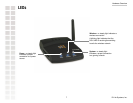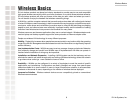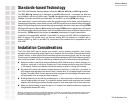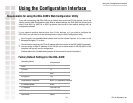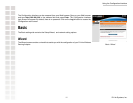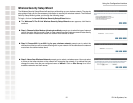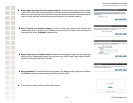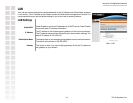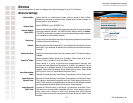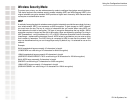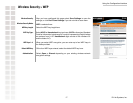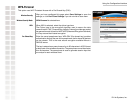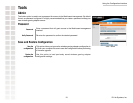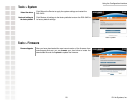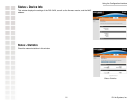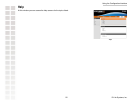
Using the Configuration Interface
15 D-Link Systems, Inc.
Wireless Mode:
Wireless Band:
Wireless Network
Name (SSID):
Site Survey:
Channel:
Transmission Rate:
Super A/G
™
Mode:
Super Mode without
Turbo:
Wireless
The wireless section is used to configure the wireless settings for your D-Link Router.
Wireless Settings
Select Ad-hoc or Infrastructure mode. (Ad-hoc mode is Peer-to-Peer
networking, exluding an access point. Infrastructure mode includes an
access point in your network.)
Select IEEE802.11g or IEEE802.11a.
Service Set Identifier (SSID) is the name designated for a specific wireless
local area network (WLAN). The SSID’s factory default setting is default.
The SSID can be easily changed to connect to an existing wireless network
or to establish a new wireless network.
Click to scan the area within the range of the gaming adapter for an available
wireless network to connect to.
52 is the default channel when 802.11a is selected. 6 is the default channel
when 802.11g is selected. All devices on the network must share the same
channel.
Select the transmission rate from the pulldown menu. The default setting
is Auto.
Select between Disable, Super A or G without Turbo, Super A or G with
Dynamic Turbo, or Super A or G with Static Turbo.
Wireless > Wireless
Super Mode is a group of performance enhancement features that
increase end user application throughput in an 802.11a/g network. For top
performance, all wireless devices on the network should be Super Mode
capable. Select either Disabled, Super Mode without Turbo, Super Mode
with Dynamic Turbo, or Super Mode with Static Turbo.
Capable of Packet Bursting, FastFrames, Compression, and no Turbo mode.
Super Mode with
Dynamic Turbo:
Capable of Packet Bursting, FastFrames, Compression, and Dynamic Turbo.
This setting is backwards compatible with non-Turbo (legacy) devices. Dy-
namic Turbo mode is only enabled when all devices on the wireless network
are configured with Super Mode with Dynamic Turbo enabled.
Super Mode with
Static Turbo:
Capable of Packet Bursting, FastFrames, Compression, and Static Turbo.
This setting is not backwards compatible with non-Turbo (legacy) devices.
Static turbo mode is always on and is only enabled when all the devices
on the wireless network are configured with Super Mode with Static Turbo
enabled.



